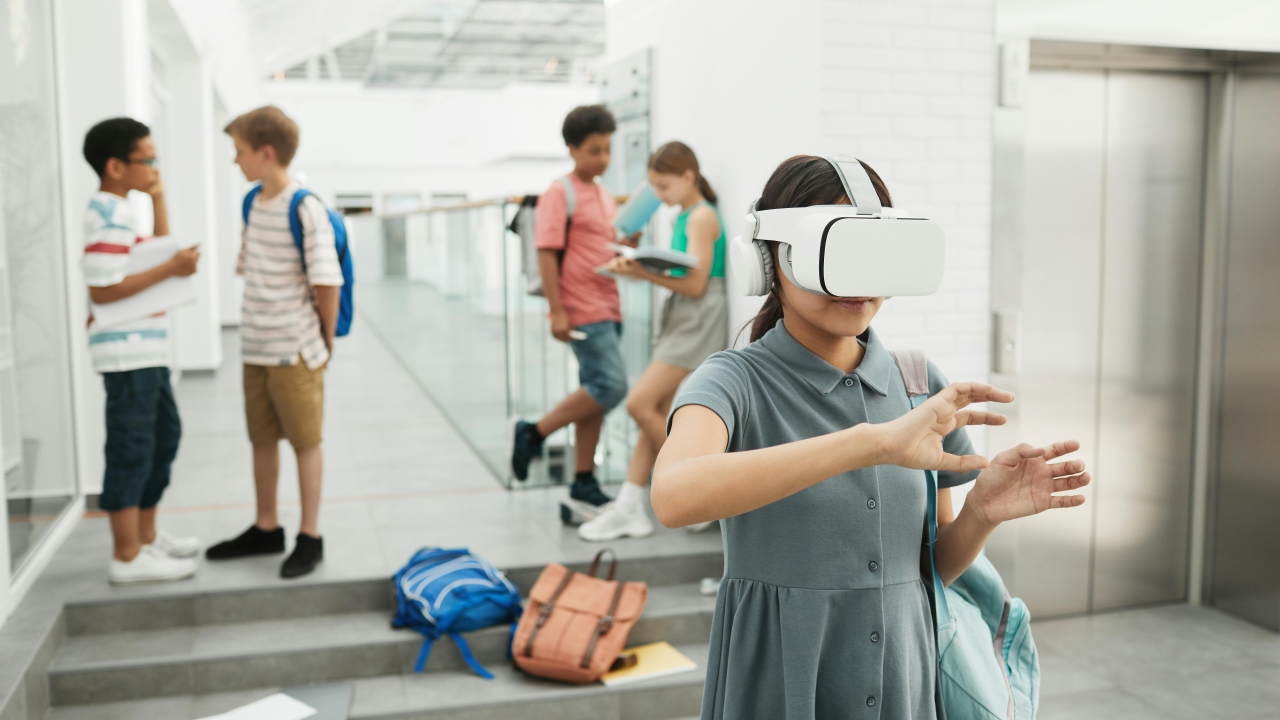AI in Education: Beyond the Buzzwords
Artificial Intelligence (AI) is often touted as the next big revolution in education, promising everything from personalised learning experiences to automating administrative tasks. While the conversation around AI can sometimes be filled with buzzwords and vague promises, its true potential goes far deeper—into reshaping the way students learn, teachers teach, and schools operate.

Personalising Learning at Scale
One of the most exciting applications of AI in education is its ability to personalize learning. Instead of the traditional one-size-fits-all approach, AI can tailor educational content to each student’s individual needs. For example, adaptive learning platforms powered by AI can assess a student’s strengths and weaknesses in real time. By analyzing data points such as quiz performance, time spent on specific tasks, and even the types of mistakes made, AI systems can adjust lesson difficulty, provide additional resources, or shift focus to areas where a student may need more practice. This level of personalization is particularly valuable in large classrooms, where teachers may not have the time to give each student individualized attention. With AI, students can follow their own learning pathways, accelerating through material they understand while receiving extra support in areas where they struggle. This technology is already being utilized in platforms like DreamBox and Smart Sparrow, helping bridge the gap between diverse learning styles.
AI-Enhanced Teachers, Not AI Replacements
While there’s a lot of talk about AI taking over jobs, in education, it’s better to view AI as an enhancement rather than a replacement for teachers. AI can take over repetitive and administrative tasks, allowing teachers to focus on more meaningful activities like one-on-one instruction, mentoring, and creating rich learning environments. For instance, AI tools can automate grading, especially for multiple-choice tests, quizzes, and even some forms of essay writing. These tools can save teachers significant time, which they can then invest in providing personalized feedback, supporting students emotionally, and creating more engaging lesson plans. AI can also offer insights into student performance that might not be immediately visible to the human eye. Predictive analytics, for example, can flag students who are at risk of falling behind, allowing educators to intervene before it's too late. In this sense, AI can act as a powerful partner to teachers, enabling them to make data-driven decisions that enhance the learning experience.
Breaking Language Barriers with AI
Education is a global industry, but language differences often act as a barrier. AI-powered language translation tools like Google Translate and Microsoft Translator have improved exponentially, making it easier for students and teachers from different linguistic backgrounds to communicate. In addition, AI tools designed specifically for education, such as Lingvist and Duolingo, use machine learning to help students acquire new languages at their own pace. These tools aren’t just useful in language classes; they open up access to educational resources for non-native speakers. This means students can engage with content in subjects like math and science, regardless of their language proficiency, thereby breaking down one of the most significant barriers to learning in diverse and multicultural classrooms.
Ethical and Privacy Concerns: Navigating the AI Landscape As promising as AI is, its integration into education brings up valid concerns—particularly around ethics and data privacy. AI systems rely on massive amounts of data to function, and in the context of education, that often means sensitive information about students. Schools, teachers, and edtech companies must be cautious about how this data is collected, stored, and used. Moreover, as AI becomes more entrenched in education, there’s a risk that it could perpetuate biases. If not properly managed, AI algorithms could reflect and amplify the biases present in the data they are trained on, leading to unequal outcomes for students of different backgrounds. Schools and developers must ensure that AI tools are transparent, fair, and designed to improve inclusivity rather than hinder it.
Looking Ahead: What’s Next for AI in Education?
The future of AI in education is filled with potential, but it requires careful planning and thoughtful implementation. As AI tools become more advanced, we may see the rise of entirely new forms of education, such as fully AI-driven classrooms, AI tutors that respond to student emotions, and even virtual learning environments that can adapt to student behavior in real time. At the same time, the role of educators will remain as crucial as ever. AI may handle the data, but teachers will continue to be the heart of education, bringing empathy, creativity, and human connection to a system increasingly augmented by machines. AI is not a one-size-fits-all solution, nor is it a magic bullet for the challenges faced by educators today. However, when used strategically, it has the potential to make education more inclusive, efficient, and personalized. The key is to move beyond the buzzwords and focus on how AI can complement, rather than replace, the human touch in education.
Stay up to date
Subscribe to the free GESS Education newsletter and stay updated with the latest insights, trends, and event news every week. Your email address will remain confidential

